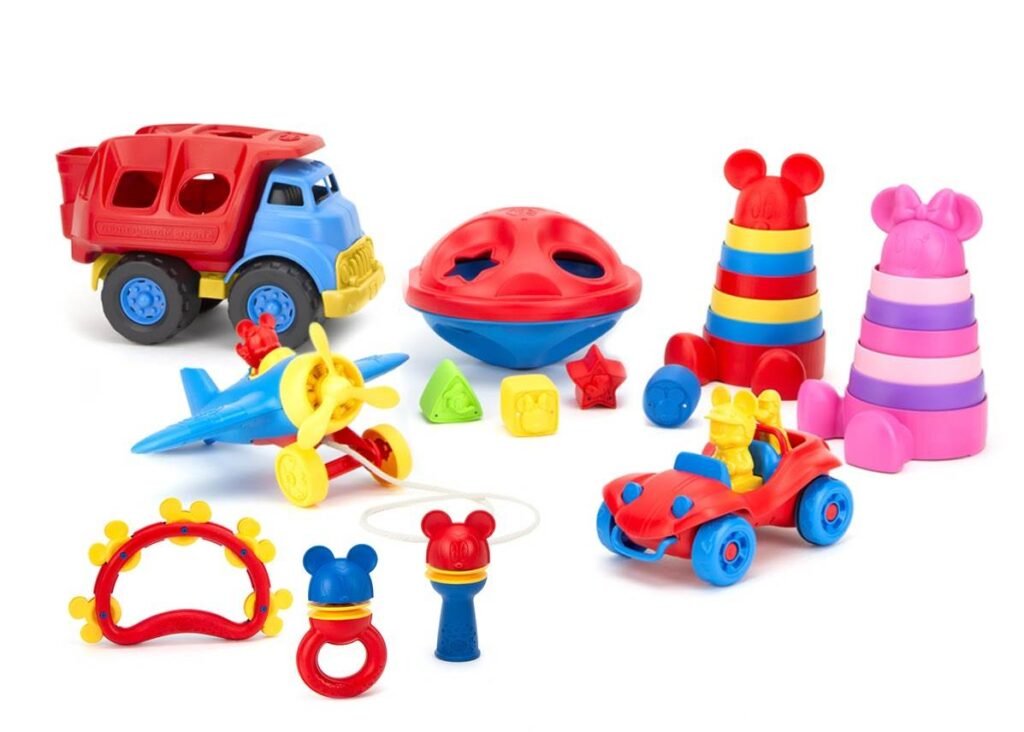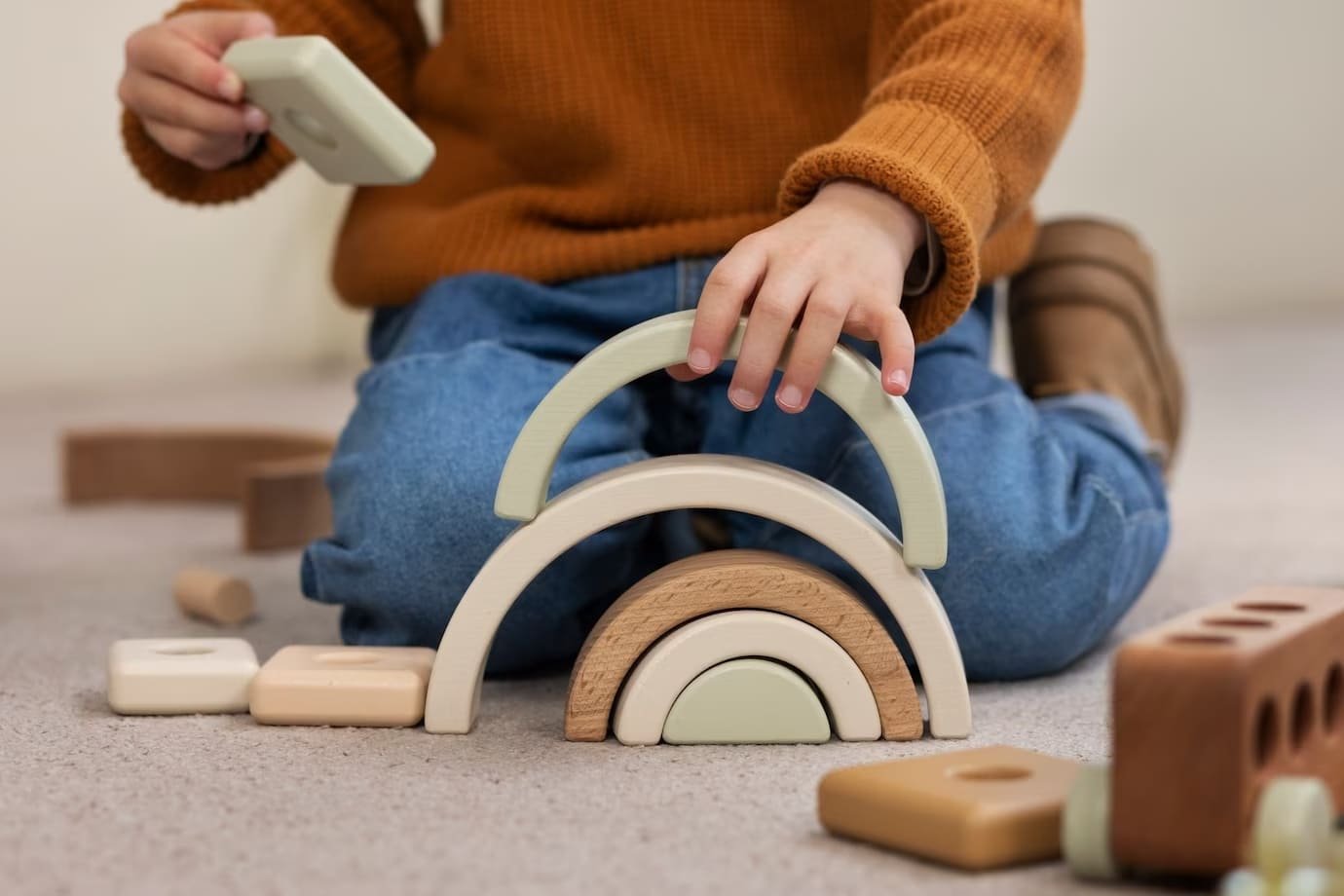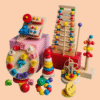Introduction
As awareness about environmental sustainability grows, more parents are seeking ways to raise their children in harmony with nature. One significant but often overlooked area where this begins is in the toys children play with. Eco-friendly toys are not only safer for the environment but also offer numerous benefits to children’s health, development, and ethical understanding. This article explores the multifaceted benefits of choosing eco-friendly toys for your child and explains why they are a smart, responsible choice for families in the modern world.
What Are Eco-Friendly Toys?
Eco-friendly toys are toys made from sustainable, natural, or recycled materials that are safe for both the child and the environment. Common materials include organic cotton, sustainably harvested wood, bamboo, natural rubber, and recycled plastics. These toys are produced through environmentally responsible manufacturing practices, often by companies that prioritize ethical labor, reduced emissions, and minimal packaging waste.

Unlike conventional plastic toys, eco-friendly toys are usually free from harmful chemicals such as BPA, PVC, and phthalates, making them safer for young children who often put toys in their mouths. Additionally, eco-conscious toys tend to be durable, meaning they last longer and reduce the volume of waste generated from broken or discarded items.
Health and Safety Benefits
The health and safety of children are always top priorities for parents. Eco-friendly toys are typically made without toxic dyes, paints, or synthetic substances. These non-toxic materials reduce the risk of allergic reactions, skin irritations, and chemical exposure.
Children are especially vulnerable to toxins due to their developing immune systems and natural behaviors like mouthing objects. Traditional plastic toys may leach dangerous chemicals over time, potentially leading to long-term health issues. By choosing eco-friendly alternatives, parents provide a cleaner, safer environment for their children to play and grow in.
Encouraging Sustainable Values
Introducing children to eco-friendly toys early in life fosters environmental awareness and responsibility. These toys often come with stories about how they are made, such as being crafted from reclaimed wood or produced using solar energy. When parents share these stories, they instill values like sustainability, respect for nature, and conscious consumption.
This early exposure helps children develop into environmentally responsible individuals who are more likely to carry these values into adulthood. It also encourages empathy and mindfulness as children learn that their actions—like what toys they play with—can impact the planet.
Promoting Imaginative and Open-Ended Play
Many eco-friendly toys are designed to be simple and open-ended, allowing children to use their creativity and imagination. Unlike high-tech toys that perform functions at the push of a button, eco-conscious toys like wooden blocks, stacking rings, and cloth dolls require active engagement from the child.

This form of play nurtures problem-solving skills, storytelling abilities, and emotional expression. For example, a plain wooden train can become a space shuttle, a treasure chest, or a racing car—all depending on the child’s imagination. This type of imaginative play is essential for cognitive and emotional development.
Long-Lasting Quality and Durability
Eco-friendly toys are typically crafted with higher quality standards and more durable materials than mass-produced plastic toys. Wooden toys, in particular, are sturdy and can be passed down from one child to another, creating a legacy of sustainable play.
Their durability means fewer toys end up in landfills, and parents spend less money replacing broken or worn-out items. The longevity of these toys also contributes to a less cluttered play environment, as children tend to form deeper attachments to a few well-made toys rather than a pile of disposable ones.
Supporting Ethical Businesses
When you purchase eco-friendly toys, you’re often supporting small businesses and companies that prioritize ethical labor practices and environmental stewardship. Many of these businesses are transparent about their supply chains, use fair-trade materials, and ensure safe working conditions for their employees.
By choosing to invest in these companies, parents can align their purchasing power with their values, contributing to a more equitable and sustainable global economy. It’s a win-win: better toys for children and a better world for future generations.
Reducing Environmental Footprint
The toy industry is one of the most plastic-intensive sectors, generating significant waste and pollution. By opting for eco-friendly toys, parents help reduce their household’s environmental impact. Sustainable toys are biodegradable or recyclable, and often come with minimal or recyclable packaging.
These small choices can collectively lead to significant environmental benefits—less plastic waste in oceans and landfills, lower greenhouse gas emissions, and reduced reliance on fossil fuels. Parents can feel empowered knowing they are making a difference through mindful consumer habits.
Educational Opportunities
Eco-friendly toys often come with an educational twist. Whether it’s a DIY solar-powered car or a puzzle made from recycled cardboard, these toys provide learning opportunities about science, nature, and sustainability. Parents can use these moments to teach children about recycling, energy sources, and the importance of conservation.
These educational elements make playtime more enriching and can spark early interests in topics like environmental science, engineering, or geography. Children become curious about how things work and are more likely to explore the world around them.
Enhancing Aesthetic and Sensory Experiences
Eco-friendly toys often feature beautiful, natural designs that appeal to children’s senses. Textures like wood grain, the softness of organic cotton, or the earthy smell of natural rubber can create a more engaging sensory experience than synthetic toys.
These sensory experiences are important in early development, helping children refine their tactile awareness, visual perception, and even auditory senses (like the sound of wooden blocks clacking together). Aesthetically pleasing toys also contribute to a calmer, more harmonious play environment.
Encouraging Minimalism and Intentional Living
Choosing eco-friendly toys often goes hand-in-hand with a minimalist philosophy. Rather than inundating children with countless plastic toys, parents focus on curating a thoughtful selection of high-quality, meaningful items. This approach reduces clutter, promotes focus, and encourages children to value what they have.
Intentional living also teaches children patience, gratitude, and contentment. When a child understands that a toy was lovingly made, is special, and is not easily replaceable, they are more likely to care for it and cherish it.
Navigating the Market: How to Choose
With the growing popularity of eco-friendly toys, it’s important to navigate the market wisely. Parents should look for certifications such as:
- FSC (Forest Stewardship Council) for responsibly sourced wood
- GOTS (Global Organic Textile Standard) for organic fabrics
- GreenGuard for non-toxic materials
- Fair Trade Certified for ethical labor practices
Also, consider whether the company shares details about their materials, manufacturing process, and environmental impact. Reading reviews and choosing brands with transparent values ensures you’re making a truly eco-conscious purchase.
Common Misconceptions
Some parents may believe eco-friendly toys are more expensive or less fun. While they may have a slightly higher upfront cost, their durability often makes them more economical in the long run. Additionally, children often find just as much joy—if not more—in open-ended, creative play.
Another myth is that eco-friendly means boring or plain. In reality, many sustainable toy brands have embraced modern, colorful, and innovative designs that delight children of all ages.

Real-Life Testimonials
Many families who have made the switch to eco-friendly toys report positive changes. Parents note that their children become more engaged, more creative, and more caring with their toys. They also express satisfaction knowing that their purchases align with their values.
Stories of siblings passing down beloved wooden toys or children proudly explaining their toy’s “earth-friendly” story are increasingly common. These experiences reflect a growing awareness that sustainable choices begin in the home.
Conclusion
Choosing eco-friendly toys is a meaningful step toward a healthier, more sustainable lifestyle for your family. These toys offer a range of benefits—from improving your child’s health and development to supporting ethical businesses and protecting the planet.
By making conscious toy choices, parents become role models in environmental responsibility. Children learn that even their toys can have a story—a story of kindness, creativity, and care for the earth.
In a world filled with fast consumption and disposable products, eco-friendly toys remind us of what truly matters: quality, integrity, and the well-being of future generations. So next time you shop for a toy, consider one that not only brings joy to your child but also respects the world they will inherit.





